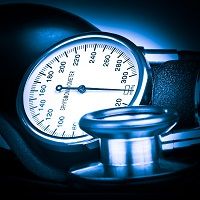Blood Pressure Control Outweighs Hypertension History in Stroke Prevention
Controlling blood pressure may be more important in stroke prevention in patients with non-valvular atrial fibrillation than thought.

, authored by
Journal of the American Heart Association
on September 12, 2016.
Blood pressure (BP) control may have a bigger role in preventing thromboembolism and hemorrhage in patients with nonvalvular atrial fibrillation (NVAF) than previously suspected, according to the results of a recent analysis. The study Eitaro Kodani, MD, PhD, of the Department of Internal Medicine and Cardiology at Nippon Medical School, Tama-Nagayama Hospital in Tokyo, Japan, and colleagues, was published in the
Previous research has shown inconsistent results as to whether or not hypertension is a risk factor for thromboembolism or major hemorrhage in patients with NVAF. The researchers conducted a post-hoc analysis “in order to investigate the influence of BP control rather than hypertension on event rates of thromboembolism and major hemorrhage,” they said.
The authors used the J-RHYTHM Registry, which they describe as “a nationwide prospective observational study to investigate the present status of anticoagulation therapy and optimal anticoagulation therapy in Japanese patients with AF,” to conduct the analysis.
There were 7406 patients in the registry who were not lost to follow up and who had NVAF and were included in the analysis. “During the 2-year follow up period, thromboembolic events occurred in 126 patients (1.7%) and major hemorrhagic events occurred in 140 patients (1.9%), including ICH [intracranial hemorrhage] in 50 patients (0.7%),” report the researchers.
The researchers identified several findings. First, they say, “we confirmed in the present study that hypertension was not an independent risk factor for thromboembolism but a risk for major hemorrhage mostly in anticoagulated patients.” Their second conclusion, they say, was “BP values at baseline were not related to the incidence of thromboembolism or major hemorrhage.” However, they also found, they say, “patients in the highest quartile of systolic BP at the time closest to an event were characterized as high risk, with significantly higher ORs [odds ratios] for thromboembolism, major hemorrhage, and ICH, even after adjustment for confounders.”
The third finding, they report, was “both the efficacy of stroke prevention and the undesirable increase in hemorrhage with warfarin were evident in the highest quartile of systolic BP of 136 mm Hg or more.” Additionally, they found “the cutoff BP values for thromboembolism, major hemorrhage, and ICH were determined to be 137/79, 130/73, and 138/78 mm Hg, respectively.”
The present study has limitations, including the fact that it is a post-hoc analysis. However, the authors conclude, “BP control appeared to be more important than a history of hypertension and baseline BP values at preventing thromboembolism and major hemorrhage in patients with NVAF.”
Related Coverage:
High Blood Pressure in Atrial Fibrillation Increases Risk of Stroke
Exploring the Relationship between Atrial Fibrillation, Hypertension, and Stroke
Intracrancial Hemorrhage in AF: Is there a Racial/Ethnic Difference?